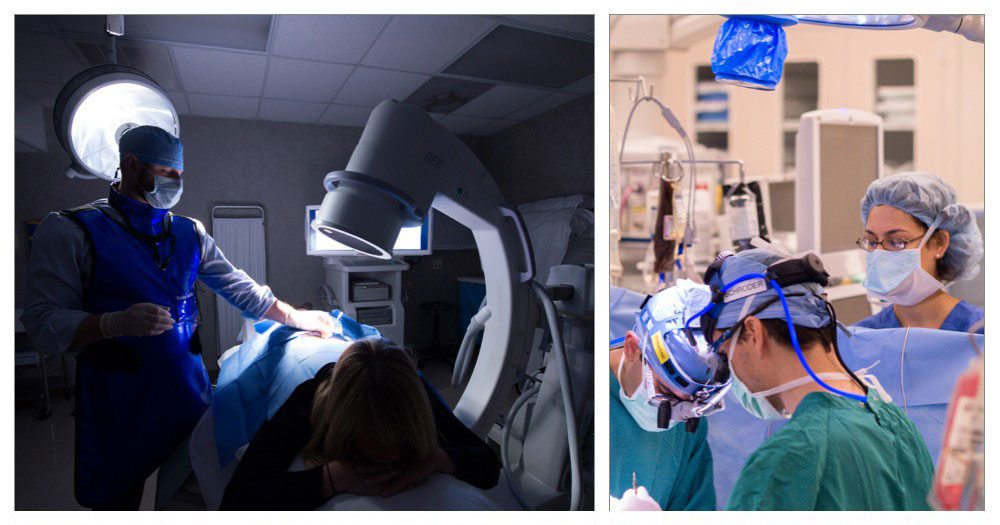
At Duke Anesthesiology, innovation and safety come together to make your experience at Duke as easy and pain-free as possible.
We care for patients before, during, and after procedures, ranging from simple sedation for diagnostic or therapeutic procedures to providing anesthesia for complex surgical procedures.
Anesthesiologists do much more than just “put someone to sleep.” Not only do we induce amnesia and pain relief, but more critically, we support and care for the vital functions of a patient’s body during simple and complex procedures. That allows the surgeon to focus only on the operation being done.
We will see you before the procedure to assess your health condition and counsel you about the expected course of events. We care for you on a one-to-one basis during a procedure. We also care for you after your surgery in intensive care units and with pain management on the wards.
Our role extends beyond the operating room and recovery room. We work in intensive care units to help restore critically ill patients to stable condition. In childbirth, we manage the care of two persons: we provide pain relief for the mother while managing the life functions of both the mother and the baby. We are also involved in pain management, including diagnosis and treatment of acute and chronic problems.
Our goal is to conduct research in areas that can improve the health, outcomes, and quality of life of patients undergoing surgery. For this, we have to define the scope and severity of the problems, investigate the causes, and develop therapies that can protect the brain from injury during surgery. We hope that our research will enable healthcare providers to protect patients.
Prior to the 1800s, pain and surgery went hand in hand. It wasn’t until 1842 that Dr. Crawford Long of Georgia performed the first painless surgery using ether. Two years later, Dr. Horace Wells demonstrated painless dentistry using nitrous oxide. The techniques used in anesthesia 40 years ago were very different from those of today. Back then, there were only two methods of anesthesia delivery available: through a mask and through an intravenous (IV) infusion. The primary monitoring tools were a stethoscope and a blood pressure cuff. Today, there are several anesthetics available that target specific body functions and numerous devices that can monitor a patient at various levels.
Although the side effects related to anesthesia depend on multiple factors, such as the type of anesthesia administered and when the patient last ate, most side effects go away as the anesthetic wears off. The common side effects of anesthesia include headache, dizziness, sore throat, nausea and vomiting, muscle pain, shivering or trembling, and mood or cognitive changes. However, in the case of general anesthesia, which affects the central nervous system, patients may feel drowsy, weak, or tired for a few days after receiving the anesthetic.
Although the risk of serious complications following major surgery and general anesthesia are low, these complications can include heart attack, stroke, brain damage, and death. The risks and complications in patients depend on multiple factors. Some of these factors include age, gender, weight, allergies, history of smoking, alcohol or drug use, and coexisting diseases.
Anesthesiology has played a crucial role in modern medicine by paving the way for many of today’s medical advances. Relatively little surgery could be performed before the discovery of anesthesia. Today, more than 25 million surgical procedures are performed each year in the United States. Over the years, medical advancements in surgery and anesthesia have made remarkable improvements in the overall care of patients.
The role of anesthesia has evolved from focusing on the relief of pain to the holistic care of patients before, during, and after surgery. At Duke, we continue to broaden our core capabilities by defining the issues associated with anesthesia. We use our research to prevent anesthesia-related problems and provide our patients with the best possible care.
The department bases its research initiative on the premise of patient care. We believe that research is the platform upon which medical innovation is built. A pioneer in brain protection research, we have always directed our research findings to open new avenues of medical and surgical care. Our respect for patient care is reflected in our close association and follow-up with our patients.
At Duke, our subspecialty care teams mean that anesthesia specialists are working with your team of doctors. For example, if you’re visiting us for orthopaedic surgery, one of our orthopaedic anesthesiologists is a part of your care team from the beginning.
This helps ensure the best care for you before, during, and after your surgery. For more information, please visit us on dukehealth.org.